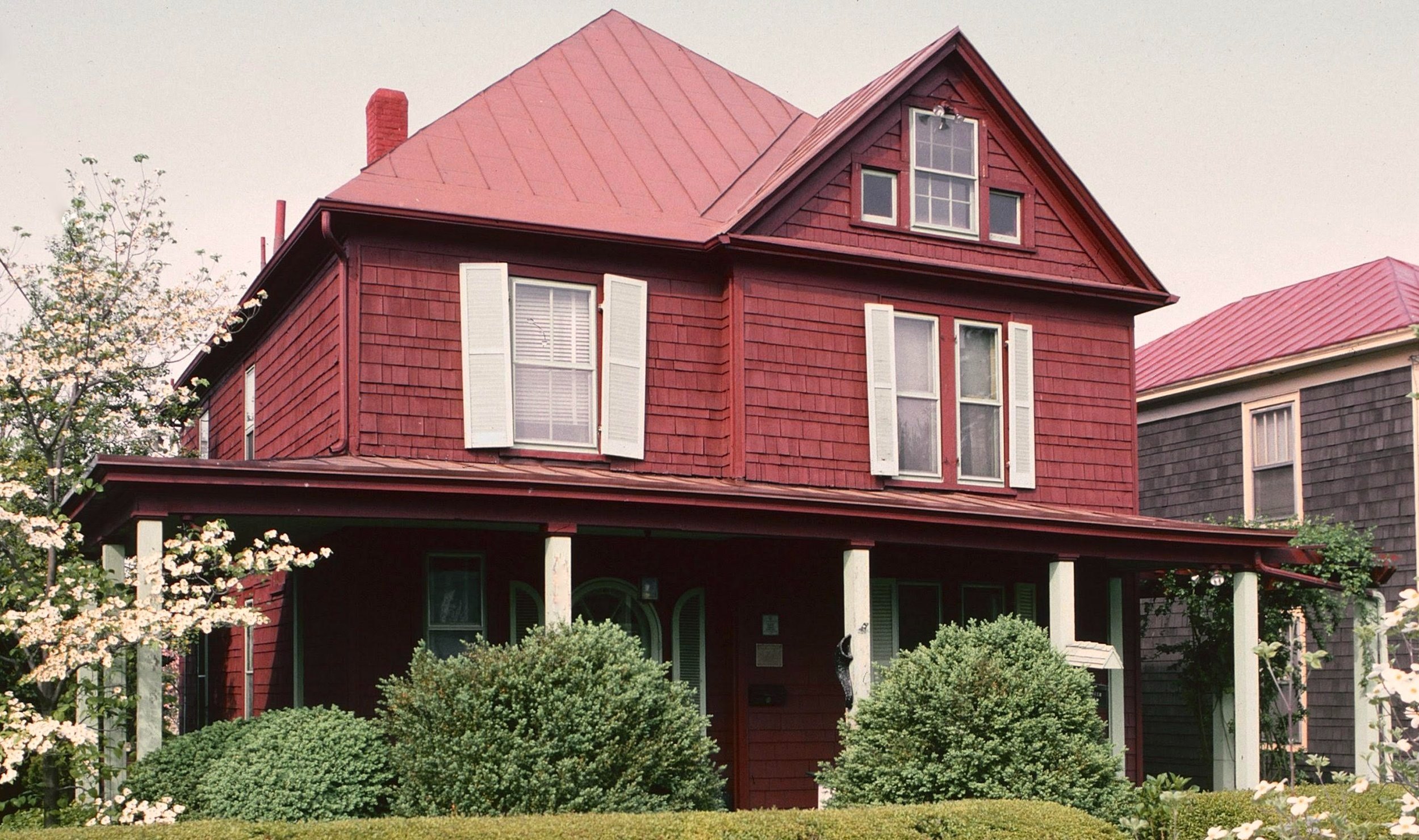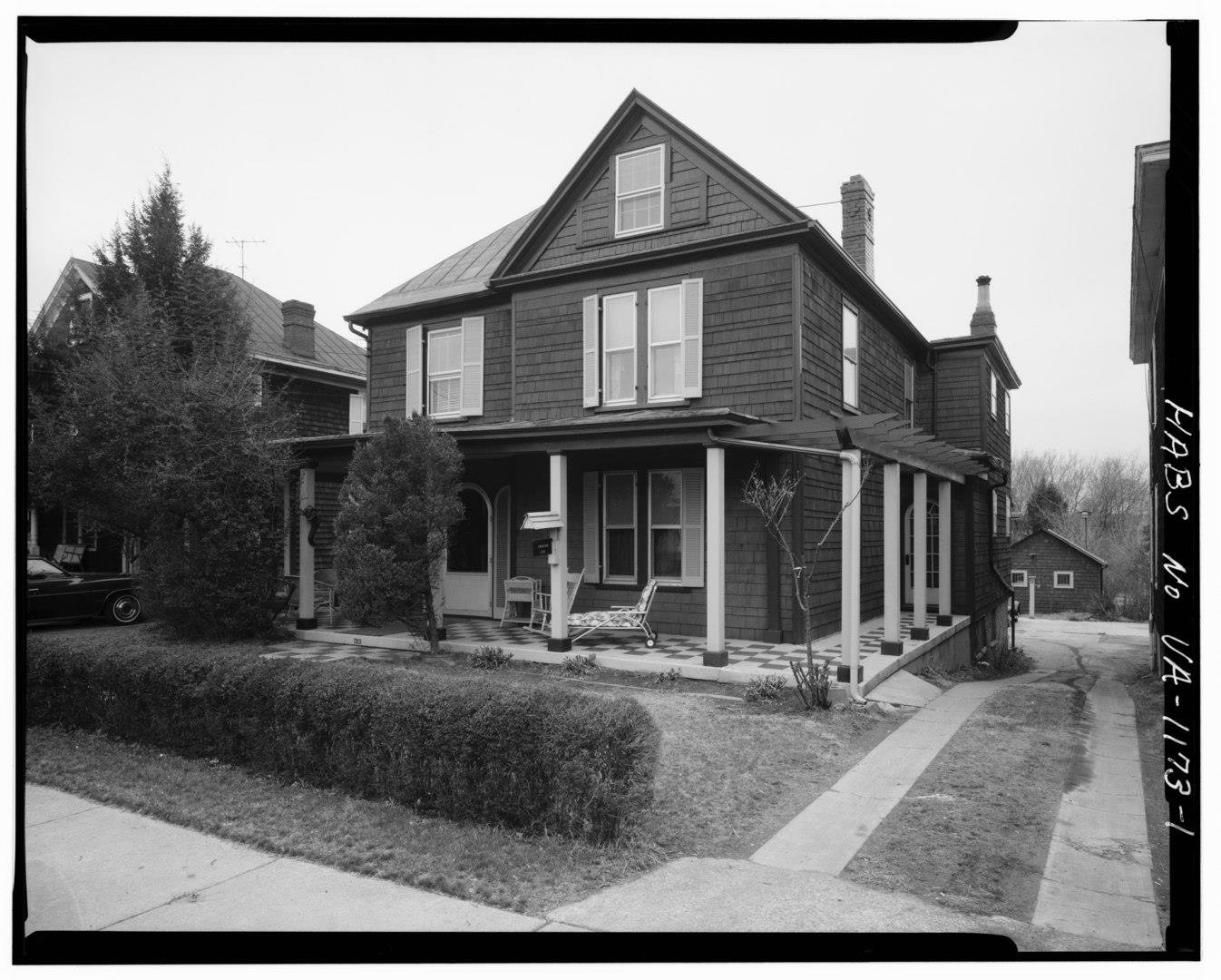
Explore the House
“We have a lovely home - one that
money did not buy - it was born and evolved
slowly out of our passionate, poverty-
stricken agony to own our own home.
happiness”
Welcome Home.
Much of the importance of the two-story, Queen Anne Style residence at 1313 Pierce Street is more about the former inhabitants and visitors than the house itself. Click below to take a look inside with a virtual tour of the house.
A Space for Anne, Edward, and Others…
Anne and Edward, both brought themselves into the bohemian styled space: Anne brought in her connection to the outdoors with floral, patterns and colorful influences. Edward brought his creative, design and engineering skills to add a personal touch to upcycled wood, mirror and copper. The numerous bedroom spaces and full bathroom made the home an ideal location for visitors to stay.

A 1990s view of the Spencer home reveals the Queen Anne style architecture.
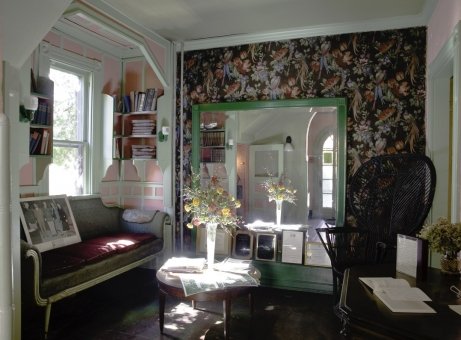
The Entry Foyer once had a large bird cage that greeted guests. (Photo by John Hall, NY)

A small telephone booth, built by Edward Spencer, is tucked under the stairs in the front hall. (Photo by John Hall, NY)
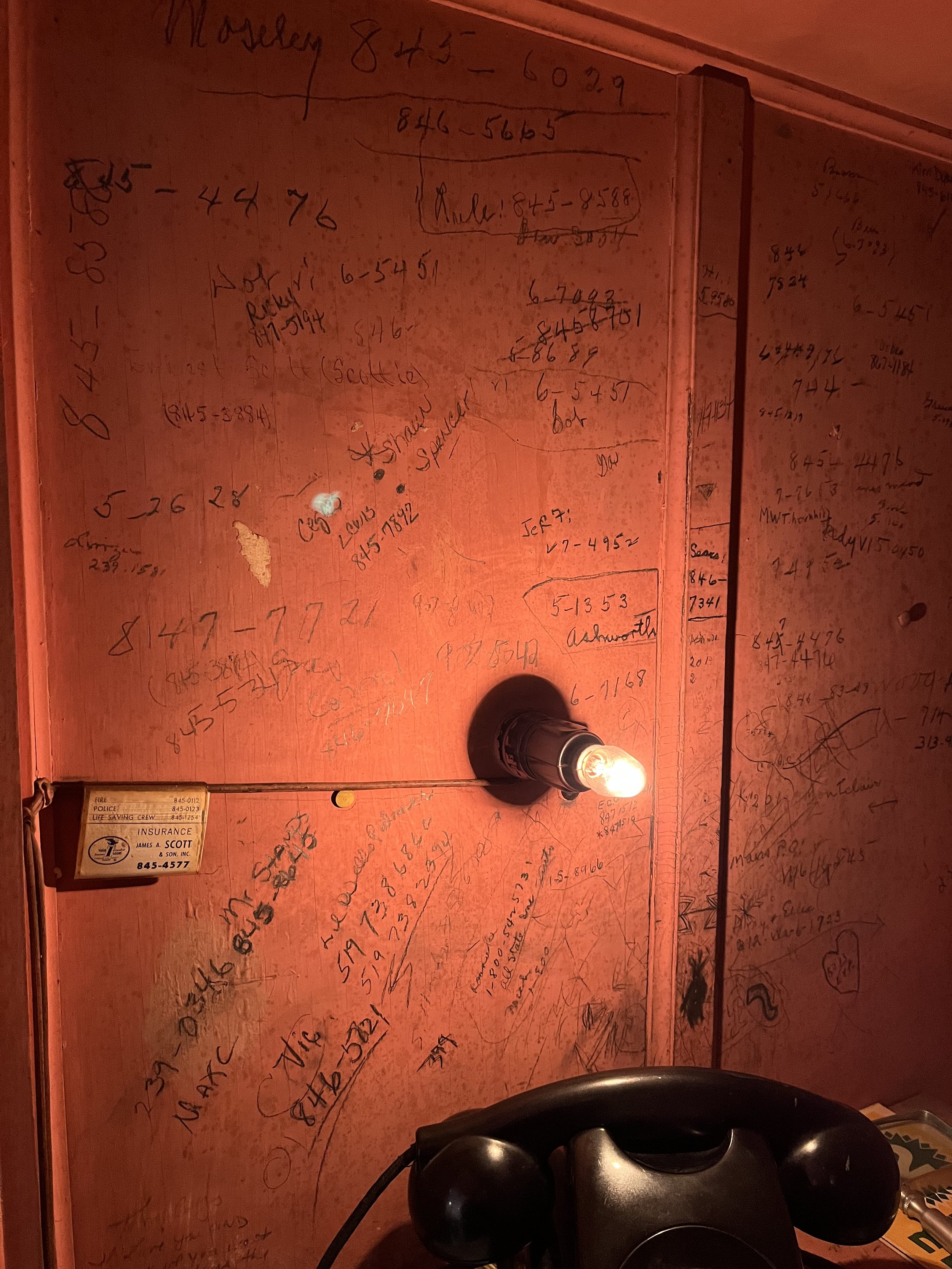
Inside the telephone booth. (Photo by Rachel Crawford, VA)

The Living Room displays a gilded wooden framed mirrow that Edward salvaged. The recent handpainted walls mimic early period wallpers that the Spencers used. (Photo By John Hall, NY)
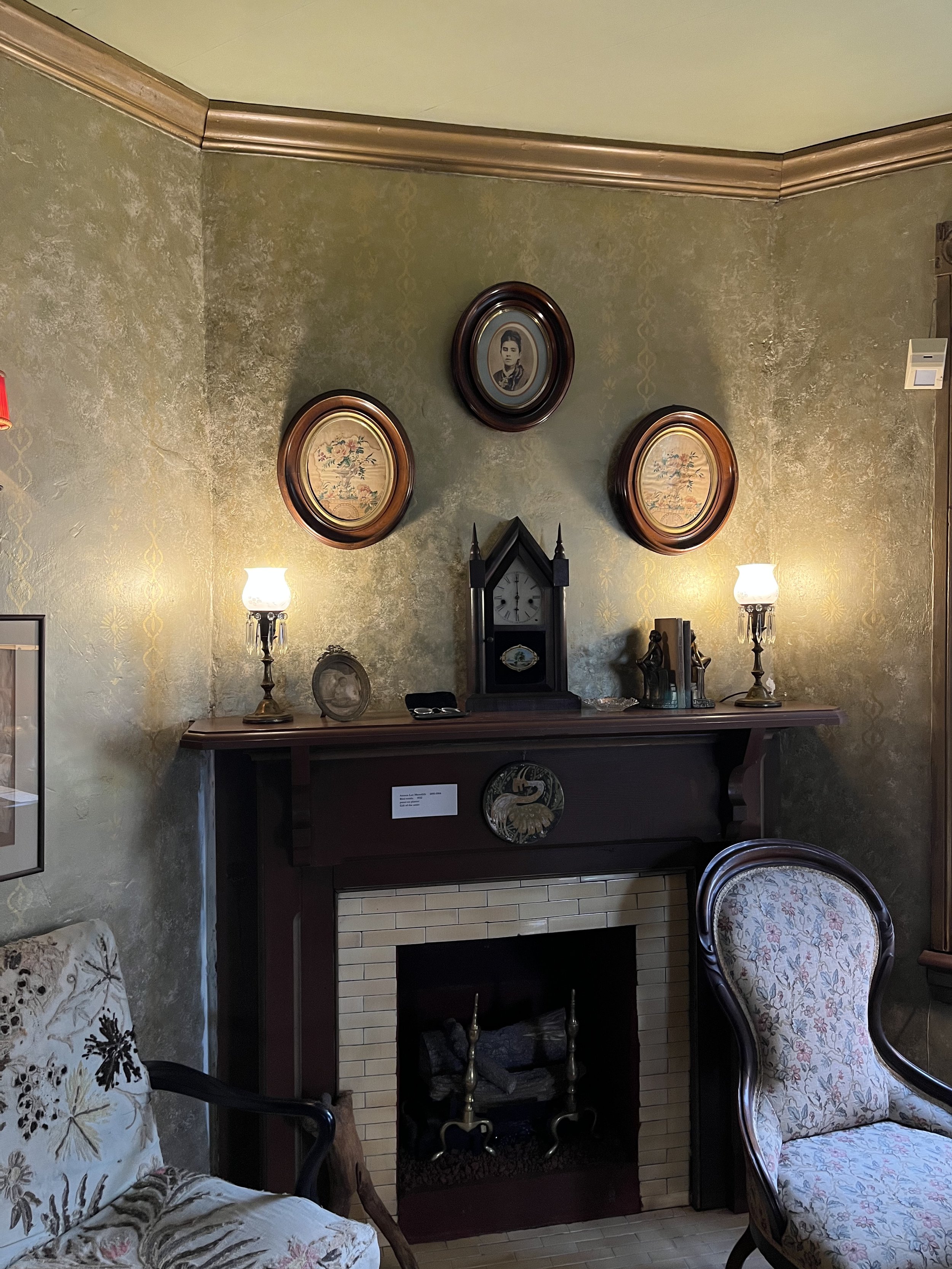
Living room fireplace. (Photo by Rachel Crawford, VA)

The dining room is ready for guests, as was often the situation in Anne Spencer's time. (Photo by John Hall, NY)

The kitchen has a Spencer poem, "Lines to a Nasturtium", and red padded doors, recycled by Edward from a local theater. (Photo by John Hall, NY)

A colorful upstairs bedroom accommodated many prominent visitors. (Photo by John Hall, NY)

A colorful upstairs bedroom accommodated many prominent visitors.

Anne and Edward Spencer's bedroom, with reading materials close by.
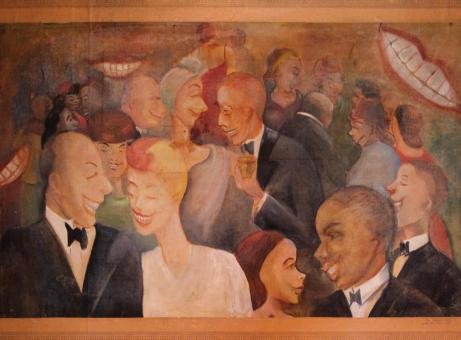
"The Cocktail Party", an original painting by Dolly Allen Mason, is glued to the bedroom wall.

Mantle in upstairs bedroom.

Dresser with family photos in Anne and Edward Spencer's bedroom.
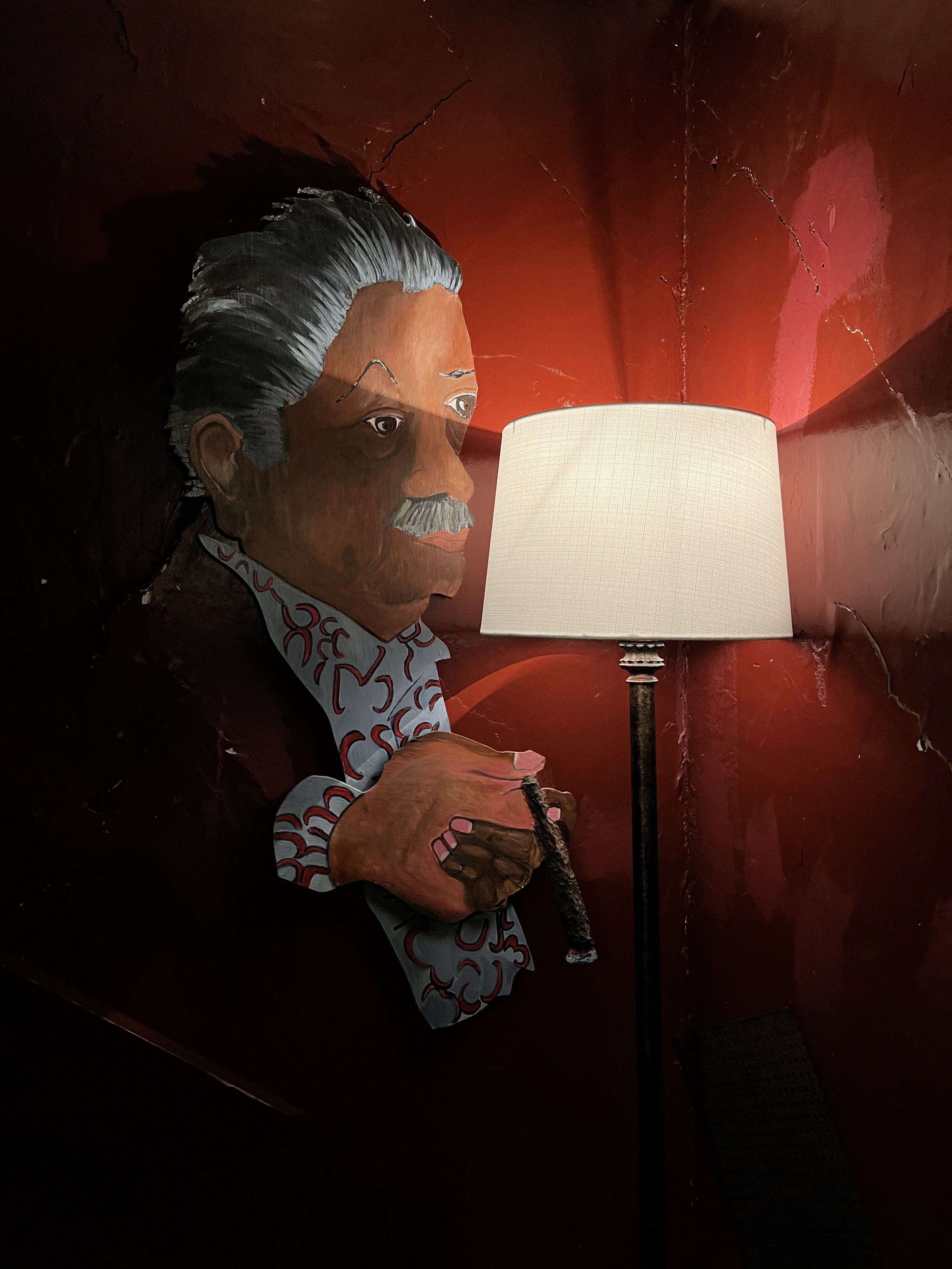
A fun find behind the attic door. (Photo by Rachel Crawford, VA)
Inside the Home
The front hall of the house reveals themes central to Anne Spencer’s life. The use of color and mirrors bring the outside in, creating a garden of light and colors on the interior of the Spencer home. Edward’s innovations are evident even in this small space—there’s a phone booth tucked under the staircase, arched doorways, leading into the front hall and leading into the living room. Crown molding graces the ceiling and doorways. Photos of family complete for space with rows and stacks of books, illustrating Spencer’s love for the people in her life and her love of reading, thinking, and writing. A small photograph of Spencer dressed in Native American garb illustrates her pride in her own ethnic diversity and in her belief in the dignity of all people. A map of the Trail of Tears in an upstairs bedroom further underscores Spencer’s abhorrence of oppressive forces.
Designed and built in 1903 by Edward Spencer for his wife and infant children, the house was modified periodically as the family grew and their social lives expanded. Edward was a remarkably creative recycler of used materials, incorporating windows, doors, handrails, or other cast-off materials into useful components of his home. A screened porch was eventually enclosed as a cozy den, and the lattice from the porch was re-used to make an entry into the garden. Guggenheimer's Department Store in downtown Lynchburg had no more use for some sheets of copper that were in a window display. Edward used the copper to cover, shape, and enhance the recessed paneling below the chair rail of the dining room. Bright, red leather, padded doors, originally part of the all-black Harrison Movie Theater on Fifth Street, were re-used to enliven the kitchen and led to a side porch. Massive, oversized banister stair railings were salvaged and re-used in the attic “dormitory room” Edward re-furbished for the visiting grandchildren in later years. He also installed a second full bathroom there, which is modestly screened only with a simple hand-drawn curtain.
The Spencer home was exceptional in that it had an original full bathroom on the second floor amidst the three spacious bedrooms, a sun porch, and a nursery. There was ample room for the many distinguished visitors who were traveling through Lynchburg, were guests of Virginia Theological Seminary, or who came specifically for the intellectual gatherings so much a part of the Spencer hospitality. Four fireplaces warmed the house in winter and added to the cordial atmosphere the guests enjoyed year round.
The furnishings today are almost identical to what was in the home during Anne Spencer's time there, and include her favorite magazines, bed linens, and toiletries. Many have commented that it's as if she went out to the store and hasn't returned home yet. The paint and wallpaper are worth noting, for Anne Spencer loved color and used it without hesitation and in unlikely combinations. That abandonment of protocol was typical of Anne Spencer, whether in her personal dress (she loved to wear slacks long before it was acceptable for women to do so), her home décor, or the mix of colors in the plantings in her garden.
The house and garden were designated a Virginia Historic Landmark in 1976, and also a Friends of the Library USA Literary Landmark, and a Historic Landmark by the Association for the Study of Afro-American Life and History. The Spencer House and Garden is included on the National Register of Historic Places.


